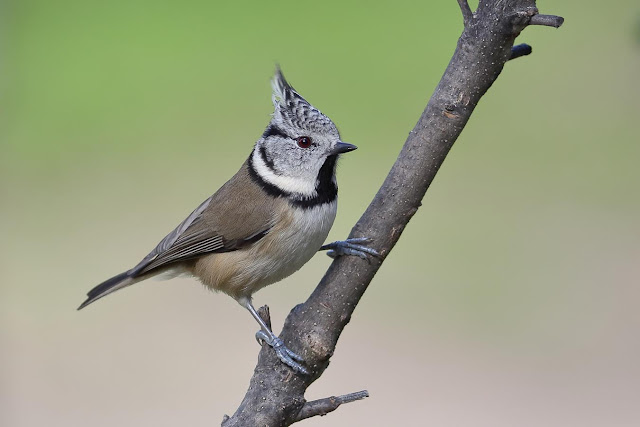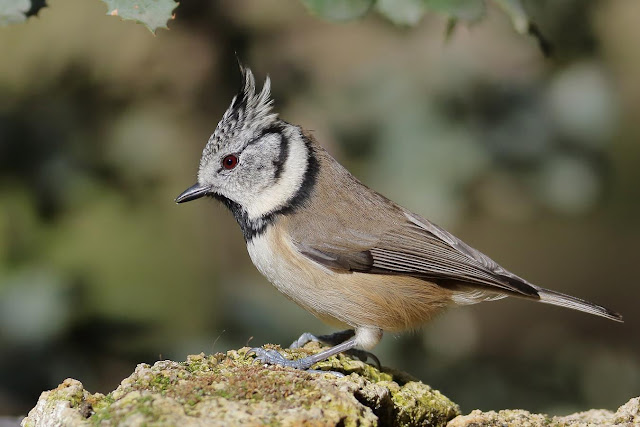In the following link you can see our next national and foreign photographic and observation trips. I hope you like them and I encourage you to come with me. An experience that you will not forget.
Hola una vez más.
Hello again.
Esta vez os muestro algunas de las aves que hemos podido fotografiar en dos sesiones fotográficas. Una hecha el 2 de noviembre y la otra el 14 del mismo mes.
This time I show you some of the Birds that we have been able to photograph in two photo shoots. One made on November 2 and the other on the 14th of the same month.
En la primera el día era muy bueno con abundante luz y en el segundo con peor luz.
In the first one the day was very good with abundant light and in the second one with worse light.
De todas ellas el que más me gusta es el herrerillo capuchino (Lophophanes
cristatus) que os muestro a continuación.
Of all of them the one I like the most is the Crested Tit that I show you next.
Ahora os muestro las fotos que tomé en los dos días.
Now I show you the photos I took in the two days.
2 de noviembre:
November 2nd.:
Lavandera blanca (Motacilla
alba).
White
Wagtail.
Hembra de pito real ibérico (Picus
sharpei).
Female of Iberian Green
Woodpecker.
Es increible lo mansa que es esta especie cuando andan alimentándose en un parque público.
It is incredible how gentle this species is when they are feeding in a Public Park.
Macho.
Male.
Urraca (Pica pica).
Common Magpie.
Busardo ratonero (Buteo buteo).
Common
Buzzard.
Carbonero común (Parus
major).
Great Tit.
Carbonero garrapinos (Periparus
ater).
Coal Tit.
Herrerillo común (Cyanistes
caeruleus).
Blue Tit.
Carbonero común (Parus
major).
Great Tit.
Herrerillo capuchino (Lophophanes
cristatus).
Crested
Tit.
Herrerillo común (Cyanistes
caeruleus).
Blue Tit.
Algunos ejemplares son más coloridos que otros.
Some specimens are more colorful than others.
Macho de pinzón vulgar (Fringilla
coelebs).
Common
Chaffinch male.
Carbonero común (Parus
major).
Great Tit.
Trepador azul (Sitta
europaea).
European
Nuthatch.
Herrerillo capuchino (Lophophanes
cristatus).
Crested Tit.
No se puede ser más guapo.
Crested Tit. It can not be pretier.
Carbonero común (Parus
major).
Great Tit.
Herrerillo común (Cyanistes
caeruleus).
Blue Tit.
Otra belleza.
Another beauty.
Gorrión molinero (Passer
montanus).
Eurasian Tree
Sparrow.
Otro macho de pinzón vulgar (Fringilla
coelebs).
Another male of Common
Chaffinch.
Herrerillo común (Cyanistes caeruleus).
Blue Tit.
Petirrojo europeo (Erithacus
rubecula).
European Robin.
Carbonero común (Parus
major).
Great Tit.
Y para finalizar con las fotos de este día unas más del herrerillo capuchino (Lophophanes
cristatus).
And to end with the photos of this day some more of the Crested Tit.
14 de noviembre.
November 14th.
Cotorra argentina (Myiopsitta
monachus).
Monk
Parakeet.
Macho de pito real ibérico (Picus
sharpei) que ya se le considera una especie endémica de la Península Iberica. Antes estaba considerado como una subespecie del Pito Real Europeo (Picus viridis sharpei).
Male of Iberian Green
Woodpecker that is already considered an endemic species of the Iberian Peninsula. Before it was considered as a subspecies of the European Green Woodpecker.
Alguno lo tuvimos realmente cerca.
Some were really close.
Hembra.
Female.
Había dos parejas de gansos del Nilo (Alopochen
aegyptiaca) que se perseguían. Estos gansos son muy pendencieros tanto con los de su misma especie como con otras aves acuáticas, sobre todo en periodo de reproducción.
There were two pairs of Egyptian Geese that were chaseing each other. These geese are very quarrelsome with those of their same species as wel as with other waterfowl, especially in the breeding period.
Como ya tenia bastantes fotos de la sesion fotografica anterior decidí no sacar muchas aunque eso es casi imposible cuando ves a las aves tan cerca y que son tan bonitas. Imposible para mi. En la foto un herrerillo común (Cyanistes
caeruleus).
As I already had enough pics of the previous photo session I decided not to take many but that is almost impossible when you seeBbirds so close and so beautiful. Impossible for me. In the photo a Blue Tit.
Esta vez acudieron varias veces los mitos (Aegithalus
caudatus).
This time the Long-tailed
Tit came several times.
Carbonero común (Parus
major).
Great Tit.
También fueron mucho mejores las fotos que pude tomar de macho y hembra de pico picapinos (Dendrocopos
major). En la foto un macho.
The pictures I could take of male and female of Great Spotted Woodpecker were also much better. In the photo there is a male.
Y lo mismo ocurrió con los carboneros garrapinos (Periparus
ater).
And the same occurred with the Coal Tit.
Hembra de de pico picapinos (Dendrocopos major).
Female of Great Spotted Woodpecker.
Trepador azul (Sitta
europaea).
European
Nuthatch.
Herrerillo capuchino (Lophophanes
cristatus).
Crested
Tit.
Herrerillo común (Cyanistes
caeruleus).
Blue Tit.
Mito (Aegithalus
caudatus).
Long-tailed
Tit.
Fijaos en esta foto que este mito (Aegithalus
caudatus) está sobre las uñas.
Notice in this photo that this Long-tailed Tit is stading on its nails.
Preciosa ave.
Beautiful Bird.
Vimos un nido de avispón europeo (Vespa crabro). No hay que confundir esta especie con el avispón asiático (Vespa velutina) que tanto daño está causando entre la población de las abejas europeas (Apis mellifera).
We saw a European Hornet's nest. Do not confuse this species with the Asian Hornet that is causing so much damage among the population of European Honey Bees.
También vimos varios conejos comunes (Oryctolagus cuniculus).
We also saw several European Rabbits.
Y cuando ya casi nos íbamos pudimos fotografiar a esta abubilla europea (Upupa
epops) que nos permitió situarnos muy cerca suyo.
And when we were almost ready to leave we could photograph this Eurasian Hoopoe that allowed us to get really close to it.
Hasta pronto.
See you soon.





























































































No hay comentarios:
Publicar un comentario